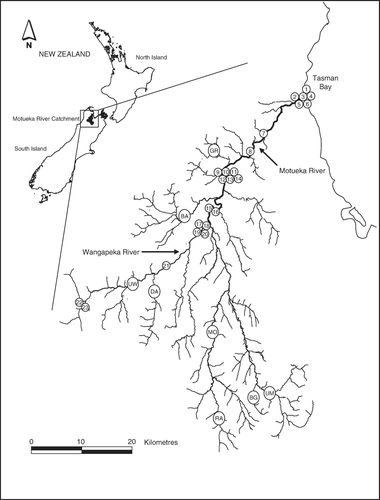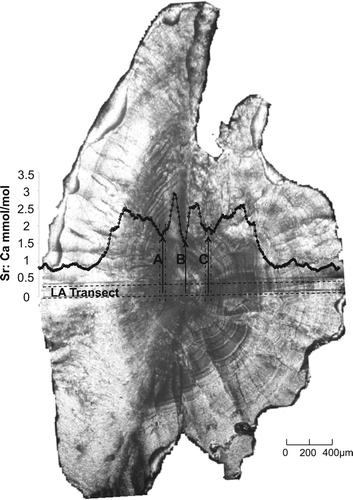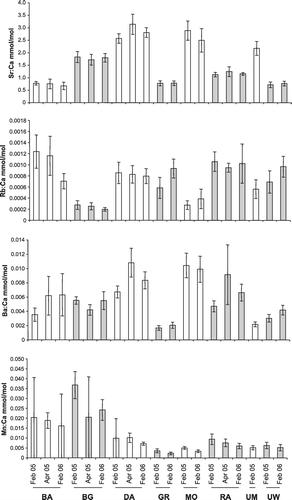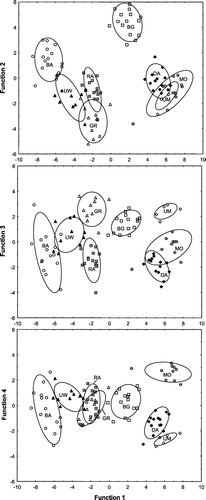Figures & data
Figure 1 Sampling locations within the Motueka River catchment. Abbreviated names represent tributaries from which juvenile brown trout were sampled; GR: Graham River, BA: Baton River, UW: Upper Wangapeka River, DA: Dart River, MO: Motupiko River, RA: Rainy River, BG: Blue Glen Stream and UM: Upper Motueka River. Numbers represent where each adult brown trout was caught.

Table 1 Catchment area, flow, land cover types and rock types (Basher Citation2003) of each of the eight tributaries for which trace element signatures were generated.
Table 2 Sample dates and results of multivariate analysis of Sr:Ca, Rb:Ca, Ba:Ca and Mn:Ca ratios for each tributary over all sampling occasions.
Figure 2 Photo showing sectioned adult otolith and ablated transect (LA Transect) highlighted by dashed horizontal lines. The element profile for Sr:Ca ratios is shown and represents Sr:Ca ratio levels as they relate to the ablated transect directly below it. Arrow marked ‘B’ indicates the primordium of the otolith, and the centre of the profile. Arrows marked ‘A’ and ‘C’ indicate the sections of transect and profile from which 50 µm of data was taken to generate the natal signature for the otolith (approximated by dashed vertical lines). Note that the natal signature also considers Ba:Ca, Rb:Ca and Mn:Ca ratios, but for clarity the element profiles for these elements are not shown.

Figure 3 Mean (±SE) element:Ca ratios from the otoliths of juvenile brown trout (n=5) from eight tributaries on each sampling occasion. Abbreviated names for the tributaries are described in .

Figure 4 Trace element signatures obtained from the otoliths of juvenile brown trout collected from eight tributaries in the Motueka River Catchment. Groupings for each of the three plots are based on discriminant functions 2, 3 and 4 versus function 1; all obtained through linear discriminant function analysis of Sr:Ca, Rb:Ca, Ba:Ca and Mn:Ca ratios. Ellipses represent 95% confidence ellipses calculated around the group means. Abbreviated names for the tributaries are described in .
